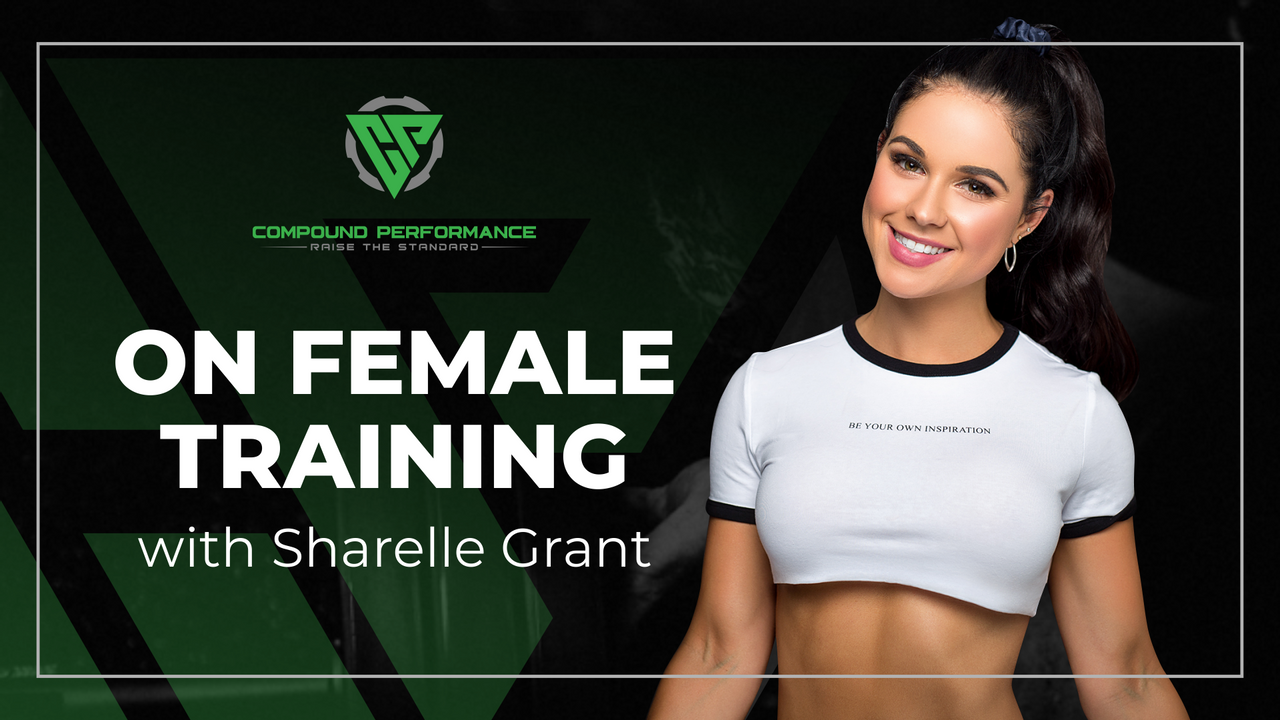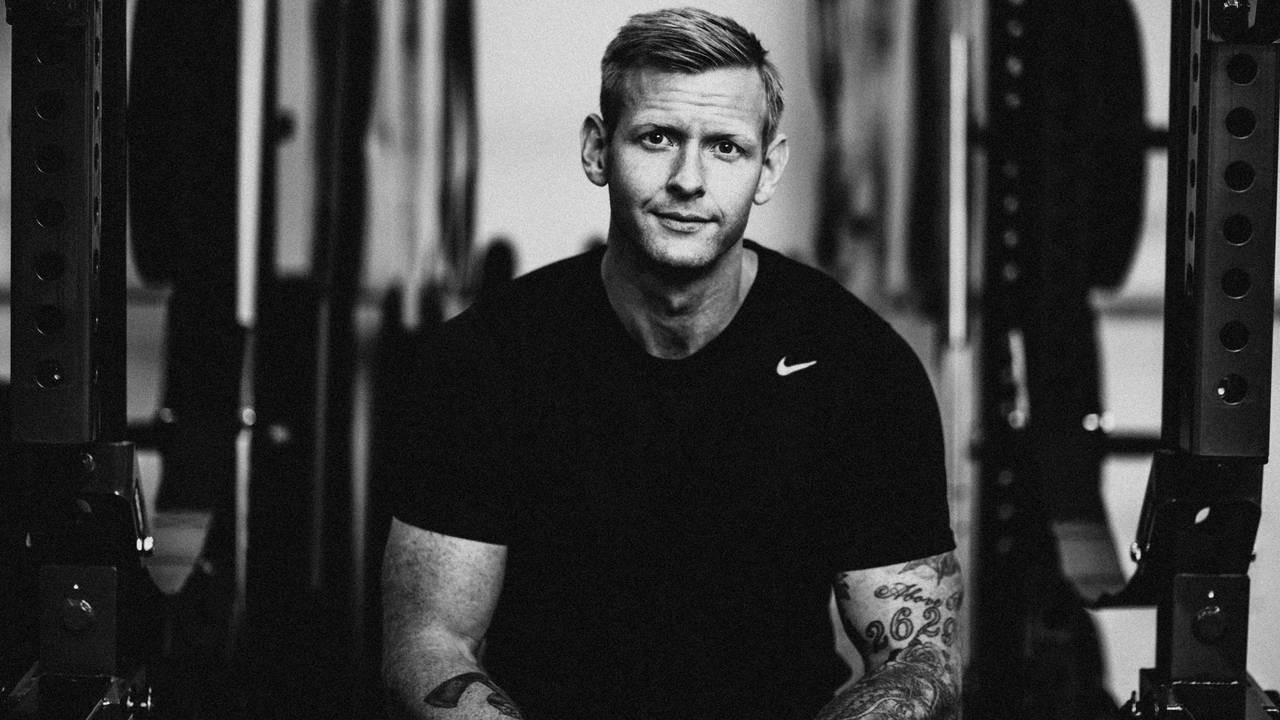On Female Training with Sharelle Grant

Sharelle Grant, online Women’s Health & Fitness Coach, and WBFF Bikini Pro. My mission is to educate and empower women to be in control of their own body, mind & soul, and evolve into the healthiest, strongest, most resilient version of themselves.
I have a background in Nursing & Midwifery, but my own personal journey inspired me to start my own coaching business in the fitness industry.
Jarred Boyd is Smarter (and cooler) Than You

Dr. Jarred Boyd currently works for the NBA franchise, Memphis Grizzlies as a Performance Physical Therapist. Prior to joining the Grizzlies, Jarred was on staff at R2P at the Frederick facility.
Since high school he has had a strong interest in the anatomy and physiology of the human body. The ability to use neurological and musculoskeletal systems to influence performance and potential were always intriguing. As a result, Dr. Boyd attended Virginia Commonwealth University earning a B.S. in Exercise Science.
Two weeks after graduation he went on to attend school at the country’s only dual degree program at Shenandoah University in Winchester, VA. Dr. Boyd had the opportunity to perform top clinical rotations at The University of Tennessee, United States Air Force Academy, and EXOS. It was during those experiences that he developed skills in the realm of sports and the physically active population, eventually earning a Masters in Athletic Training and a Doctorate in Physical Therap...
Counter-nutated thoughts with Katie St. Clair

About: Katie St. Clair, CSCS, CPT
Katie is a wife, mom, strength coach, educator, business owner, and lover of all things movement. After 20+ years in the industry, Katie decided to create an educational program based on her passion for seeing other women excel in the industry as leaders and educators, There was a time when life got in the way and she couldn't be the professional she wanted to be because she had to put her family first. She has spent the past 5 years embarking on a journey of learning and combining that knowledge with her love of athletic movement, as well as her passion for empowering female movement professionals, with the intent to elevate the entire industry standard.
When Trolling Goes Wrong with Dean Guedo Jen Stuart Johnston

Today we're sitting down with Jen Stuart Johnston and Dean Guedo about the impact of trolling and social media for our fitness business.
In this episode we talk a lot about social media, trolling our friends, and Matt's obsession with meme pages.. as well as some fitness and nutrition things.
About Jen Stuart Johnston:
My name is JEB Stuart Johnston. You can call me
Dragon. I’m pretty into martial arts and lifting weights. Not necessarily in that order.
About Dean Guedo:
I like cops, doing tons of activities, and aspirations to create a multimedia company that provides worldwide prestige service.
Kettlebells and Butt Stuff

Today Coach Samantha Ciaccia sits down with Matt and Kyle to talk a little about fitness and a lot about her adventures in the ER, The is a laugh out loud episode that you won't want to miss!
Trainer by day, Physician Assistant by night. Sam lives a duo-career, treating patients in the ER while living out her passion as a Strength Coach in NYC. She’s helped a range of clients from getting out of pain to conquering feats of strength! Kettlebells are her specialty focusing on the biomechanics of movement patterns and how they are applied to Kettlebell training. She encourages everyone to live up to their full potential in her sessions and overall in life!
Samantha sits down with Matt and Kyle to talk a little about fitness and a lot about her adventures in the ER, The is a laugh out loud episode that you won't want to miss!
Stop Stealing David Grey's Shit

- Lower Body Basics Phase 2
- Core Basics
VIEW ALL OUR PRODUCTS AND PACKAGES AVAILABLE HERE
The Hero's Journey

Storytelling is one of the most instrumental tools that humans developed towards evolution. The ability to learn, and teach, through the experience of others allowed for the growth of language, community, and modeling. A common theme in the learning process is the “Hero’s Journey” and almost every story you know, from the Bible to the Avengers story arc, follows it.
Stay with me here..
Every client wants to be the hero in their own journey, and every session is classically set up as a Journey in itself. We start with character development (goals/needs analysis), move into anticipation and plot development (prep), ramp into the challenge and adversity arc (strength BRO), and finish with the climactic reward (cooldown and reinforcement). Following this plan will almost always lead to client engagement as it’s literally in our DNA to be stimulated by this “story.” Too little or too much challenge leads to disinterest and an inability to relate once the novelty wears off. This process ...
On Imposter Syndrom

The truth is that I have imposter syndrome, every successful person I’ve ever known has imposter syndrome.. if you want to do truly great things you’ll never be doing “well enough.” That doesn’t mean you’re not doing well though, and that you don’t have a valid message to share.
Imposter syndrome isn’t a bad thing, it’s often a necessary stimulus to push harder. Self-doubt, insecurity, and anxiety are a part of anything involving risk for good reason, they provide the spark for growth, and they fact that you’re going through probably signifies that you’re on the right path.
Simply seeking to be “good” at something leads to complacency but seeking out “great” will inherently lead to insecurity, as you’re acutely aware that there will always be more to do. Enjoy the push and put your message out there, sometimes you have to jump in the deep end.
Stress Management

We tend to use ambiguous terms to conceptually categorize contextual inputs. What is stress, how is it that the same stimulus can elicit completely different reactions within different individuals? Understanding that the stressor often isn’t the issue is the first step in understanding “why” it’s affecting you. The second step is understanding why we inherently seek it out when our lives are absent of it.
Stress is little more than stimulus and we are constantly processing stimuli at the sensorial and interoceptive levels, and typically only cognitively aware of novel stimuli or novel contextual applications. Repeated exposure to these stimuli results in an individual’s ability to learn (cope) and form physiological and psychological strategies respectively. Here’s the kicker, these strategies have an equal opportunity to be maladaptive or adaptive.
As coaches, can we find a way to apply stress to our clients in a way that they perceive as beneficial? Can we create an atmosphere that...
Assessments and Patterning

Three very different and distinct morphologies (four if you count the gorilla in the background), will most likely lead to four very different and distinct pattern variations. What objectively constitutes a good archetype (squat, hinge, upper-body movement vectors, etc) across all morphologies? Would you expect all four of these individuals to move the same from a visual perspective? Would that constitute their movement as being either “good” or “bad” respective to one another? Or would you look at how structures move in relation to one another within the same organism?
These questions are one area where I see a huge hole in the active assessment process, the other being that motor learning with increased immersion will inherently lead to improvements in testing scores and potential false-positives (a post for a different day though). This is why I’ve began leaning towards passive ROM testing that last few years, you can learn to game a movement but you can’t fake shoulder IR (as one of...

